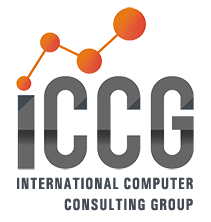The world has changed dramatically since March 2020. Supply chain models and concepts that we took for granted have been stretched, and in some cases, broken. New business models, new market opportunities, and new ways of working have emerged. As has been said by many, the world will never be quite the same. A recent report by McKinsey, “The future of work after COVID-19,” highlights that e-commerce has grown 2 to 5 times faster than before the pandemic, and that about 20% to 25% of the workforces in advanced economies could work from home between 3 and 5 days per week without a loss in productivity.
So, what is your company’s strategy for the future? Has your business model changed or evolved? Have your employee work patterns, procedures, and expectations changed? Have agility and innovation become more important? While many businesses are wrestling with these and other strategic questions, the important situation to avoid is the old, “Alice in Wonderland” scenario:
Read More
Topics: ERP, Distribution, Supply Chain, Supply Chain Network, Cloud BI, Enterprise Asset Management, Enterprise Software, Infor CloudSuite M3, Infor CloudSuite ERP
With spring just around the corner and rising hope that the vaccination rollout will eventually bring some relief to restrictions, it is time to start thinking about how the world of work should move forward. While the pandemic forced us to adopt new ways of working, we have learned some valuable lessons in the last year that should not be quickly forgotten. In fact, some of these new strategies should continue long after the crisis subsides as we have come to the realization that the workforce, the workplace and work itself will never be the same. Here are three concepts to consider as you plan for the future.
Read More
Topics: ERP, Manufacturing, Supply Chain, Supply Chain Network, Infor M3 ERP, Enterprise Software, Retail Supply Chain, Supply Chain Operations, WMS, Supply Chain Management
For years, food and beverage manufacturers have been concerned with short shelf life, inventory planning, and margin pressures. In today's competitive landscape, yesterday’s supply chains have had to adapt and change to respond to today’s consumer expectations of healthier choices, greater ingredient transparency, and the more options for online or e-commerce shopping.
This health and wellness trend isn't new. What’s new is the level of growth we’re seeing in the market for consumers that want a healthier lifestyle—and are in fact, demanding it from their food habits and purchases. Food and beverage manufacturers are doing their best to meet this trend with cleaner labels, more plant-based options, and more ethically sourced food. Both new product introductions and long-standing products in the market are being updated with healthier ingredients to replace preservatives, saturated fat, sugar, sodium, or genetically modified (GMO) ingredients.
Read More
Topics: ERP, Food & Beverage, Supply Chain, Food Technology, CloudSuite Food & Beverage, Infor M3 ERP, Enterprise Software, WMS, Supply Chain Management
Cloud technology in the hospitality industry is changing the way that hotels, resorts, and gaming organizations serve guests. The deciding factor to success is in how simple it is for a guest to get what they want from a hotel via their own personal devices even before they arrive at a location. Essential mobile-based technology enables them to book a room, to set arrival times, to upgrade a room, add services, and more, all without necessarily having to make contact with staff.
That call for contactless solutions delivered via cloud PMS is a priority for the industry right now. This is for convenience reasons. Yet it also has social implications in an era of maintaining distance and limiting contact. How do cloud-based solutions make that easier than legacy on-premises solutions? Let’s take a look at some of the details.
Read More
Topics: ERP, Food & Beverage, Distribution, Supply Chain, Supply Chain Visibility, digital disruption, Enterprise Resource Planning, Food Technology, CloudSuite Food & Beverage, Enterprise Software, Retail Supply Chain, Supply Chain Operations, Infor CloudSuite M3, Infor CloudSuite ERP
The fact is managed services are on the rise and in high demand by customers worldwide—and, with good reason. They are an ideal way for customers to get the on-demand expertise they need at a predictable cost. With Infor Managed Services, our goal is to provide customers the long-term support and post-go-live services that coincide with the double-decade lifespan they expect from their Infor application investment.
Read More
Topics: Digital Transformation, ERP, Manufacturing, Food & Beverage, Webinar, Process Manufacturing, Artificial Intelligence, Fashion PLM
As fashion organizations grow to introduce new products or clothing lines, acquire other companies, shift priorities, and change channels to market, key stakeholders can be left out of the conversation. A networked approach to running your company can solve these problems. Collaborative networks work because they engage internal and external partners, workers, and stakeholders, helping to incentivize and execute supply chain processes more effectively than ever before.
New insights will continue to emerge as consumer behaviors shift and production opportunities evolve, but a continuously synchronized and updated network can keep you agile from sketch to store by making critical information accessible to colleagues, organizations, suppliers, and customers. Collaborative networks work to improve customer service, maximize margins, and minimize loss attributed to miscommunications such as missed inventory targets, downtime, spoilage, and other challenges.
Read More
Topics: ERP, Fashion & Retail, Distribution, Supply Chain, Fashion & Apparel, Supply Chain Visibility, Supply Chain Network, Cloudsuite Fashion & Apparel, Infor CloudSuite PLM for Fashion, Infor CloudSuite Fashion PLM, Enterprise Software, Infor CloudSuite Fashion, Supply Chain Operations, Supply Chain Management, Infor CloudSuite M3, Infor CloudSuite ERP
As industry attitudes and consumer behaviors change, so does the challenge of sustaining a business in the fashion industry. The global health crisis has accelerated the need for fashion and retail brand owners to reconsider their current business models to satisfy their digitally native consumers while maintaining omni-channel supply and ensuring sustainable production.
Whether large or small, fashion brands can turn these challenges into opportunities by transforming their business models. How does your organization meet the expectations and desires of today’s digital consumers? Are you still using old technology that might have served you well in the past but is now beyond its shelf life? If you already have an ERP system in place, there’s a good chance it’s no longer able to keep up with your business needs and growth aspirations.
Read More
Topics: ERP, Fashion & Retail, Distribution, Supply Chain, Fashion & Apparel, Enterprise Resource Planning, Fashion PLM, Cloudsuite Fashion & Apparel, Infor M3 ERP, Infor CloudSuite PLM for Fashion, Infor CloudSuite Fashion PLM, Enterprise Software, Infor CloudSuite Fashion, Supply Chain Management
Digitizing core processes in combination with trading partner connectivity, helps supply chain leaders increase responsiveness and adaptability. As more organizations look to remove manual tasks from their operations, the ability to update suppliers and trading partners in real-time allows supply chain processes to become more efficient. Here are three scenarios where moving to a network platform have helped companies generate additional value across their supply chain.
- A footwear provider experiencing rapid growth realized spreadsheets and manual processes were no longer sufficient to support increase demand and future progression. The brand digitally transformed sourcing, procurement, accounts payable, finance, and supplier management processes to support scale. The ability to digitally collaborate on orders, invoices, settlements, and ASN creation was foundational to the transformation. Witnessing 4X growth, the company today has 99.8% invoice accuracy and spends approximately 30 minutes per day processing invoices.
- A major global sports apparel brand sought to solidify the health of its supply base by ensuring access to capital. Utilizing a multi-enterprise network allowed the company to connect all parties and digitized document flow, enabling automated financing and settlement. A diverse portfolio of finance providers was plugged in to create a significant pool of credit and programs to meet varying needs. In doing so, the brand was able to enhance the financial health of its suppliers while deploying its own capital preservation program.
- An outdoor gear manufacturer having automated its PO, invoice, and settlement processes to generate efficiency was seeking further avenues to improve margins. It leveraged existing transaction data to auto-populate ASNs and packing and shipping instructions, enabling direct shipments from the factory. As a result, plans for new distribution center were deemed no longer necessary due to increased efficiency.
Read More
Topics: ERP, Manufacturing, Distribution, Rentals & Equipment, Supply Chain, Fashion & Apparel, Infor M3 ERP, Enterprise Software, Retail Supply Chain, WMS, Supply Chain Management
Know you want to transform but don't know where to start? Want to gain $9-12 for every dollar you spend? Read on to find out why starting with your people is the best first step to prioritizing digital transformation projects.
Digital transformation is at the top of the to-do lists of most companies, but one topic that is often missing from a discussion on digital transformation is which areas to prioritize. Most businesses can’t afford to completely overhaul a core function of the enterprise top to bottom, along with the technology that supports it, at any one time. Instead, they’ll target specific areas for transformation. That approach minimizes disruption to the business, keeps costs manageable, and helps the business apply lessons learned to future transformation projects. The question, though, is which areas to target first?
Read More
Topics: Digital Transformation, ERP, Manufacturing, Distribution, Rentals & Equipment, Supply Chain, Fashion & Apparel, Industrial Manufacturing, Digital Manufacturing, Infor M3 ERP, Enterprise Software, Retail Supply Chain, WMS, Supply Chain Management
A point of sale system is not always given much thought on a day to day basis by decision-makers in multi-location organizations. But a POS solution is a pivotal element to business operations and strategy, even if it’s not glamorous. Transactional data collected via your point of sale is the fuel your business needs to grow. With a legacy solution in place, your business is bound to lose important ground as the demands of the industry evolve.
So, let’s break it down.
What are some of the ways that your point of sale should serve your business today, perhaps in ways that weren’t in place even a few years ago? How should your current POS continue to support your business strategy and goals and help you keep pace with and exceed those of your competitors?
Read More
Topics: ERP, Food & Beverage, Distribution, Supply Chain, Food Technology, CloudSuite Food & Beverage, Enterprise Software





.jpg)





